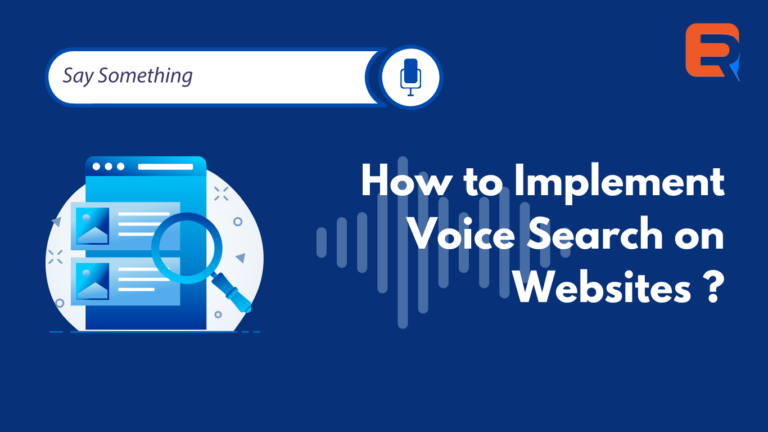Most of us remember when Siri first came out back in 2011.
The technology was a novelty, a cool tool to test out, with sometimes informative and other times laughable responses to voice queries.
Not many people predicted it would become a major digital trend in the future.
But voice search has changed a lot since then.
Now there are a variety of voice-activated technologies on the market (e.g., Cortana, Amazon’s Alexa, Google Assistant).
People use voice search on their mobile devices, and more than 420 million voice assistants have been sold.
People already use voice assistants way more than they used to, mostly for commands (e.g., set an alarm, call Mom). But t
There’s still a lot of growth potential for search marketing as well.
That’s mostly because the AI technology behind voice search has become immensely more accurate. According to Google, voice recognition accuracy has grown to 95 percent since 2013:

The Benefits of Voice Commands for Search
As voice recognition technology becomes more accurate and versatile, users are beginning to realize more of the benefits of using voice commands for search.
According to Google research, here are the top reasons people use their voice-activated speakers:
- It allows them to more easily multitask.
- It enables them to do things faster than other devices.
- It empowers them to instantly get answers and information.
- It makes their daily routine easier.
Voice commands are a great tool when you’re cooking and need to check a recipe but your hands are covered in flour. It’s also a popular hands-free method to get local business information while driving.
At the same time, almost everyone can ask a question out loud faster than they can type it, especially when using a mobile device.
While many people today are still learning the benefits of using voice search to get information, it’s becoming a valuable tool to simplify the search process and quickly get answers without interrupting your other daily tasks.
Optimizing for Voice Search in Search Marketing
While the adoption of voice search is still growing, smart marketers will start optimizing for it now to get the most out of search marketing in the long run.
Voice search optimization is already important for large and local small businesses. People often use voice search while driving, asking questions about business location, store hours, etc.
Both small businesses and chain companies looking to optimize for local SEO should already be taking voice search queries into consideration.
That said, location-specific information isn’t the only thing people want from brands out of a voice assistant. According to a Google survey, people want to get information about deals and sales, personalized tips, information about upcoming events, customer support, and more:
Most businesses optimizing for voice search today do so as an afterthought. They try to make changes to their existing content to make it better suited for voice search results. While that approach can be somewhat effective, it won’t be worthwhile in the long run.
More businesses are optimizing for voice search every day, using the same strategies, and becoming equally competitive.
If you really want to stand out from the crowd for search engines, you should consider voice search optimization when developing content from the beginning.
Here are six big changes you’ll need to make to optimize for voice search.
Voice Search Optimization: 6 Big Changes You’ll Need to Make
1. Keyword Research for Voice Search
You must consider the semantic differences in queries.
People type and speak very differently.
Say someone loves the voice search features on their phone and wants to invest in a new home voice assistant. With a keyboard, they might search for “home voice assistants,” but with a voice search, they could say, “What is the best home voice assistant?”
So you need to brainstorm what kind of questions people might ask related to your target keywords.
Lots of tools can help you do this.
For example, Answer the Public has become a popular SEO tool. All you have to do is type in a root keyword, and it will return a map and a list of commonly asked questions related to that keyword:
Google search also has a “People Also Ask” feature you can use to get more question ideas. Just type in a question you’ve already brainstormed and it will show other related questions:
2. Site Structure & Content Development
When building your content strategy for voice search optimization, you’ll want to map questions onto the various points of your customer journey, which ensures you’re available through voice search at any stage the customer needs.
Consider these points in the customer journey:
- Awareness: “What’s the best home voice assistant?”
- Interest: “Can you make a phone call with Google Home?”
- Evaluation: “Who is more intelligent Siri or Google?”
- Purchase: “How much does an Amazon Echo cost?”
- Customer support: “Why does Google Home sometimes not respond?”
- Loyalty: “What products work with Google Home?”
Try to organize the questions you brainstorm into different categories that map onto the customer journey.
Benu Aggarwal recently discussed voice search content development at an SMX Advanced, explaining three main content types that work well for voice search optimization:
- Informational intent (guides, how-tos, etc.)
- Navigational intent (store locations, services, press releases, customer service info)
- Transactional intent (videos, product information, comparisons, product stories)
Aggarwal’s strategy suggests integrating FAQ pages into every major section of your site.
Here are the site architecture and related content example from her presentation:
Her strategy isn’t the only way you can optimize for voice search, but it illustrates how deep voice optimization can penetrate into your site structure and content strategy if you let it.
There are some surface-level changes you can make to your content to be more voice-friendly, but it’s far from the extent of your options.
If you want to really maximize voice search capabilities, you’ll need to get buy-in from various arms of your organization (developers, designers, content creators, etc.).
3. Structured Data Optimization
Optimizing for voice search is very hit and miss.
Unlike with regular search results, where the second result for a search query is likely to attract a lot of valuable traffic, voice search only returns one answer to searchers from the number one best-optimized result.
So the real key to voice search optimization is making your content as relevant as possible to Google for the specific query.
Ensuring your pages are easy to crawl is one part of this. If you haven’t done so already, create a sitemap, and submit it to Google Search Console.
The other thing you can do to help Google bots better understand your content and its relevance is to use structured data (schema) markup.
Structured data markup helps you create metadata for your content that tells Google what it’s about but doesn’t affect how your content appears for users.
Here are examples of some of the kinds of information you can identify for Google bots so they better understand your content’s relevance to search queries:
- Products
- Places
- People
- Organizations
- Events
- Recipes
- Reviews
- How-to content
- News articles and other creative work
Here’s a full list of all the things you can mark up with Schema.
Structured data markup doesn’t affect your rankings directly, but can help give you a boost in voice search results by illustrating the relevance of your content for specific queries.
Using structured data is also a good SEO practice overall, as it can help Google feature elements of your content in search results.
Once you’ve implemented structured data markup for your voice optimized pages, you can use Google’s Structured Data Testing Tool to check your work. Then submit a new sitemap to Search Console.
4. Consider Creating Google Actions or Alexa Skills
Another strategy you can use to make your content more accessible for home assistant users is creating Actions on the Google App or building custom skills in Alexa.
These actions are essentially software that expands the abilities of Google Assistant (or Alexa) to interact with your content (or app if you have one).
Actions make it possible for users to have back-and-forth conversations with your app or content, making it more relevant and valuable to voice command users.
That said, you shouldn’t create actions just for the sake of it.
The Google Assistant directory is already filled with many unused Actions that marketers created just for the sake of “voice optimization.”
If you do create an Action and want it to get used, it should be useful and optimized for the needs of voice home assistant users.
It’s possible to create a wide variety of Actions for an app.
If you want to have content-based actions, it needs to be for a podcast, recipe, or news publication that already uses structured data markup and Accelerated Mobile Pages (AMP). Then all you need to do is claim your Actions through the directory.
5. Mobile-Friendly Is Voice Friendly
Search algorithm updates in recent years have already made search engine marketing a “mobile-first” environment.
There’s no telling if it will one day switch to prioritizing voice-friendly results, but it wouldn’t be a surprising end result based on the benefits of voice search and its current growth trajectory.
Luckily, optimizing for each of these search experiences aren’t mutually exclusive strategies.
Remember that most voice searches actually come from mobile devices. And much of what you can do to optimize for voice search is also beneficial for mobile-first optimization.
For example:
Improving Site Speed
Backlinko performed an analysis of potential voice search rank factors and found that voice search results load 52 percent faster than average pages:
Page speed is a mobile ranking factor because users expect quick results when searching for information on the go.
So improving page and site speed is valuable for both strategies.
Using AMP & Structured Data
As explained above, using structured data can help make your content more relevant for voice search results, and you need to use AMP if you want to have Actions on the Google app.
Structured data can also make your content easy to summarize and consume in search results that appear on mobile phones. AMP optimized pages also greatly prioritized in mobile search results.
Optimizing for Local Search Results
A much higher percentage of mobile and voice searches are location-based queries.
People use their mobile web browsers or phone’s voice search capabilities to get information (e.g., location, business hours, products available) about local businesses they plan to visit.
So the more you can do to optimize your site and content for local search results, the better optimized you’ll be for both kinds of queries.
Claiming your business listing through Google My Business is the first step. Then develop content that easily answers location-based questions.
6. Be Ready for Future Developments
While there are already many steps you can take today to incorporate voice optimization into your SEM strategy, it’s really only just the beginning.
Home voice assistants are just now becoming popular.
People are learning more about the capabilities of these tools, and are likely also exploring more voice command capabilities on their mobile devices as a result.
Meanwhile, Google, Amazon, Microsoft, and other major players in the area are constantly developing new features and capabilities to help the use of voice search grow.
The best thing you can do to stay on top of the voice search game is to be ready for future developments as they come along.
As more people adopt the technology, the more insight you’ll get into how your business can fit user needs through voice search.
The fact that Google has plans to add voice query data to Search Console in the future is one prominent example of a development we can look forward to.
Adding voice query data into Search Console means you’ll have actionable, personalized insights into how users are already reaching your sites through voice search.
The Bottom Line
At this point, there’s no way to know if voice commands will one day dominate search queries.
What is clear: voice commands are poised to have a big impact on search marketing.
Considering that nearly all the steps you can take to optimize for voice search are beneficial to your SEM efforts overall, the decision to focus on voice optimization should be an easy one.
Incorporating these strategies into your overall optimization efforts can help you ensure you’re prepared to capture new voice traffic as adoption continues to grow.
More Voice Search Resources:
- Google Answers How to Optimize Content for Voice Search
- 5 Ways Voice Search Changed in 2017 & How to Prepare for 2018
- Voice & Conversational Search: Top Challenges & How to Overcome Them
Add Voice Search to your website
Image Credits
Featured Image: QuanticMind
All screenshots taken by author, July 2018




